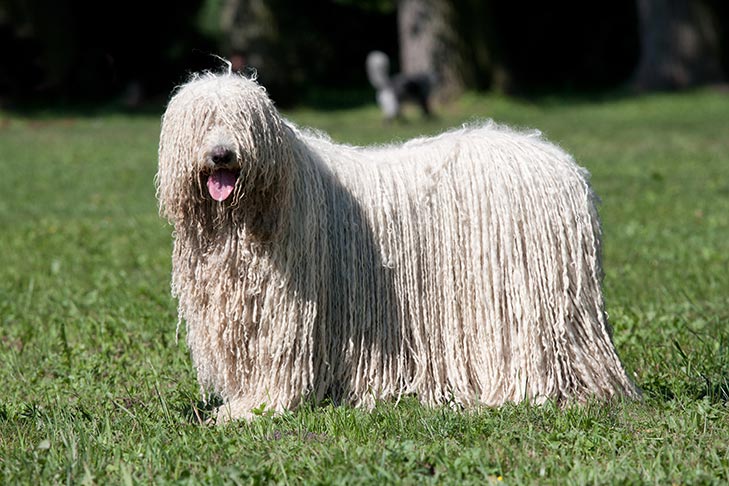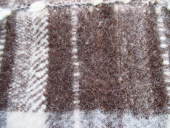
 10
10




There is madness to my method.
"Life finds a way"- Ian Malcolm
"We're all mad here" - The Cheshire Cat
 2
2




"The only thing...more expensive than education is ignorance."~Ben Franklin. "We can easily forgive a child who is afraid of the dark; the real tragedy of life is when men are afraid of the light." ~ Plato
 8
8




 8
8




This is all just my opinion based on a flawed memory

 4
4




Ben Zumeta wrote: It looked like a large anatolian shepherd (120+lbs) but with crazy thick and fluffy grayish fur that looked like you could go up and pull handfuls off until you filled a large garbage bag and it would still be plenty warm.

"All we have to decide is what to do with the time that is given us." ~ Tolkien
 8
8




This is all just my opinion based on a flawed memory

 6
6




Visit Redhawk's soil series: https://permies.com/wiki/redhawk-soil
How permies.com works: https://permies.com/wiki/34193/permies-works-links-threads
 6
6




Cat Knight wrote:In another part of this forum, someone brought up dog wool, which is known today as Chiengora...
I can't help but think that if HUSP (Horticulture of the United States of Pocahontas... from Paul's Original HUSP post ) had happened, this breed would not be extinct and chiengora would be a more accepted/mainstream concept.
Since learning about it, I've wondered if I could breed a new breed of wool dog... I don't have enough information and I don't have any hereditary right to try to recreate the original Comox. I've started this thread in hopes of working with others to determine the most desirable traits to breed for and other thoughts related to this goal. Here is what I have so far...I have grouped traits by type. I have significant experience working with dogs but none in breeding dogs, spinning, dying or harvesting wool from animals, so I especially need help in these areas.
Physical Characteristics:
Medium Breed 30-40 lbs ish (smaller dogs live longer, but too small and there isn't enough fiber per dog) not prone to hip/joint problems can eat a wide variety of appropriate foods
does not have health problems associated with other breeds (like breathing problems in smushed face dogs or eye issues in cocker spaniel or bladder control problems in dachshunds)
Behavior:
enjoys being brushed willing to jump willing to stand still Likes being touched by people not scared of the noise or vibration of shears? good family dog
Coat/Wool Traits:
Always white or neutral Uniform color grows quickly interlocking fibers dyes well soft warm Dual fur? undercoat and overcoat? is this possible? beneficial? no/few guard hairs?
Other:
easy to breed small litters Not particularly barky/vocal a good mouser (I'm allergic to cats and I'd like a mousing alternative.. this is a trait of several types of terriers. It is my new breed and I can breed for whatever trait I want)
What Else?
Nails are sold by the pound, that makes sense.
Soluna Garden Farm -- Flower CSA -- plants, and cut flowers at our farm.
 10
10




Invasive plants are Earth's way of insisting we notice her medicines. Stephen Herrod Buhner
Everyone learns what works by learning what doesn't work. Stephen Herrod Buhner
 8
8




In the south when the wind gets to 75 mph they give it a name and call it a hurricane. Here we call it a mite windy...
 5
5




Ben Zumeta wrote:Their wool was apparently only surpassed in value by mountain goat, which had to be found in the Cascades (mtn goats were later imported to the Olympics by Teddy Roosevelt for hunting and became invasive nuisances to vegetation and people). My friend said he thought a couple of the semi feral dogs around their area (NW corner of peninsula) looked like they were related to these wool dogs. However, one such dog that I saw with him looked nothing like what is described and pictured above. It looked like a large anatolian shepherd (120+lbs) but with crazy thick and fluffy grayish fur that looked like you could go up and pull handfuls off until you filled a large garbage bag and it would still be plenty warm. He may have been wrong, but I always deferred to him on his own culture and their history.
There is madness to my method.
"Life finds a way"- Ian Malcolm
"We're all mad here" - The Cheshire Cat
 4
4




Kenneth Elwell wrote:
Owners, handlers, groomers, breeders, rescue organizations; all could be sources of fiber from ALREADY existing dogs! No need to go breeding more "new" dogs... The best part, is the dog care and feeding part is outsourced, and no new puppy mill needs to be created to breed sweaters and hats.
Heck, a business model could be made around all these folks donating their collected grooming "waste" fur, which could be aggregated, and processed into any number of stages of the yarn-making process, then sold to spinners, weavers, knitters. Finished goods could also be made and sold directly. It could be set-up as a not-for-profit and donate profits to dog rescue organizations, possibly to the breed-specific rescues for breeds that are good wool dogs, which are often of great interest to fans/owners of those specific breeds... which in turn would be a way to get more "donations" of groomed fur from those breeds!
There is madness to my method.
"Life finds a way"- Ian Malcolm
"We're all mad here" - The Cheshire Cat
 9
9




Part of the issue here is that in North America, we don't have a market currently for the sheep's wool our farmers produce, so creating the infrastructure for dog wool at even the community level, as opposed to just the individual level, may be a struggle until more people decide that cheap artificial fabrics aren't an acceptable choice.Cat Knight wrote:I think you may be onto something too. I bet most shelters, especially those in warmer climates would be happy to allow people to volunteer to shave or brush dogs and remove the fur. If you are a charity like that why turn down free grooming.
Likewise I bet most groomers would love to get something for the fur they produce.
Visit Redhawk's soil series: https://permies.com/wiki/redhawk-soil
How permies.com works: https://permies.com/wiki/34193/permies-works-links-threads
 5
5




 7
7




 5
5




“Only when the last tree has been cut down, the last fish been caught , and the last stream poisoned, will we realize we can’t eat money. “
 4
4




Kimberly Agnese wrote:This is an absolutely astounding post! I had no idea that spinning dog fur was such a thing and that there were so many unexplored possibilities for it!
Spinning sounds fascinating! I already enjoy crocheting and can knit in a somewhat novice fashion… but how to start with spinning inexpensively? Living in the suburbs spinning never seemed like a possibility for me but I have always been intrigued by it. I’m wondering about starting with something simple like perhaps twisting a rope out of my dogs fur… she sheds soooo much!
"The only thing...more expensive than education is ignorance."~Ben Franklin. "We can easily forgive a child who is afraid of the dark; the real tragedy of life is when men are afraid of the light." ~ Plato
 2
2




“Only when the last tree has been cut down, the last fish been caught , and the last stream poisoned, will we realize we can’t eat money. “
 6
6




This is a stuffed Comox from a museum.
Little house with a big garden in the city!
"It is no measure of health to be well adjusted to a profoundly sick society." ~ J. Krishnamurti

|
Warning! Way too comfortable! Do not sit! Try reading this tiny ad instead:
The new gardening playing cards kickstarter is now live!
https://www.kickstarter.com/projects/paulwheaton/garden-cards
|







